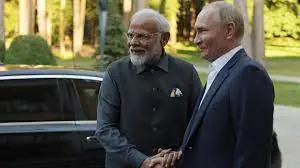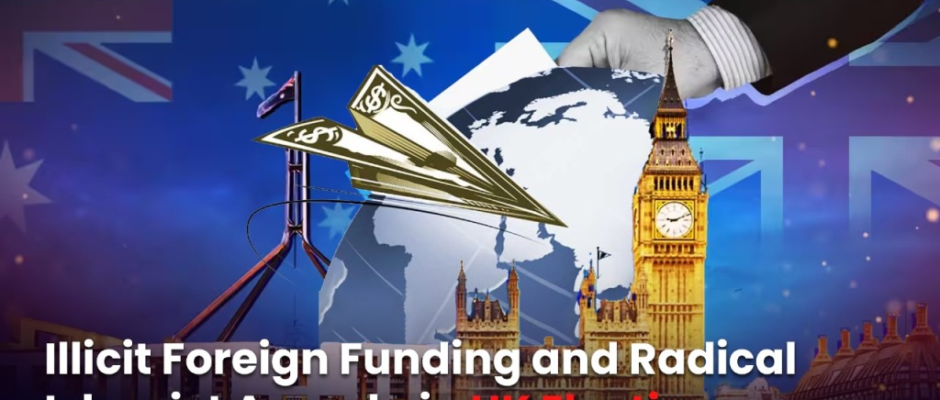Balbir Punj While speaking in Lok Sabha on Monday (July 1), Rahul Gandhi issued a proclamation, “Aap Hindu Ho Hi Nahin” (You are not Hindu). The diatribe was undoubtedly directed against the Bharatiya Janata Party and the RSS, including Prime Minister Narendra Modi, his cabinet colleagues, fellow members of both houses and millions of voters and supporters of the saffron outfit. Rahul’s profane rant smacked of three things— his sense of entitlement, ignorance of Indian ethos and outright contempt for democratic norms. Can Rahul or anybody else decide who is a Hindu or not? During the just concluded Lok Sabha polls, 23.59 crore Indians had voted for the BJP. There would be millions more who support the BJP but couldn’t vote for their favourite party for various reasons. Without a doubt, overwhelmingly, they identify themselves as Hindus. In a jiffy, Rahul stripped them of their faith and identity! Who can dare make such a condescending statement? Only someone with an acute sense of entitlement. Unlike Abrahamic religions, Hinduism is timeless (hence also Sanatan), catholic and pluralistic. There is no centralised authority in Hinduism, and none has any right to pass such edicts regarding the faith. However, Abrahamic faiths are different. The Ahmadiyya sect in Pakistan has been shunned from Islam, and its followers are routinely persecuted because their belief system, differs a little from the mainline Shia-Sunni doctrine. These two sects are also perpetually locked in internecine wars because of their conflicting theological beliefs. Ironically, Ahmadiyyas were at the forefront, along with the Communists and Muslim League, in striving for an Islamic Pakistan. Doesn’t Rahul somewhat sound like a Pakistani establishment when he decrees in Lok Sabha who is a Hindu and who isn’t? During his one-hour 40-minute speech, Rahul also observed, “Those who call themselves Hindus indulge in hatred, violence and untruths 24×7.” Can anyone, including Rahul, make such an acerbic statement about Islam, or any other faith? Don’t miss the contradiction. After suspects are identified following a terror episode anywhere in the world, the usual comment is: a terrorist has no religion. The perpetrators of terror, however, insist that they caused the mayhem as a part of a divine mandate ordained by their faith. Rahul’s scalding allegations against Hinduism are without any basis whatsoever. He can get away with this charade because of the immunity members of Parliament enjoy. In their entire history, Hindus have resorted to violence only to defend themselves. Hinduism is inclusive and has in its fold numerous traditions, all equally valid – ranging from devout idol worshippers to outright heretic atheists. Anyone who cares to call oneself a Hindu is a Hindu. Rahul spoke about violence and hate. Given his track record in this respect, he sounds sanctimonious? While Rahul argues against the two evils, he happily promotes divisive narratives and conveniently allies with those very forces that seek to divide Indians based on caste, region and faith. Reducing Indians to sheer caste identity was central to his election campaign. Hate and divisiveness, the bane of India, have been introduced into its socio-economic-religio-cultural life by alien creeds. Use of violence and or deceit are a part of their playbook while dealing with non-believers or dissent within their ranks. Uniformity, particularly in matters relating to faith, is central to their existence. In contrast, Indian ethos indifferent to uniformity, focuses only on harmony. Who ceded one-fourth of India (August 1947) to the forces of Islamic fundamentalism, where only hate and intolerance rule? Pakistan is not just a country; it’s a bigoted idea that transcends borders. Recall 1980-90 when Pakistan trained, and funded terrorists, with local help, hounded Kashmiri Pandits, out of their ancestral homeland. In a recent interview, the newly elected National Conference Member of Parliament Aga Syed Ruhullah Mehdi threatened a repetition of the black decade in retaliation to the abrogation of Articles 370 and 35A. In the recent past, Kanhaiya Lal (28 June 2022) in Rajasthan and Umesh (21 June 2022) in Maharashtra, were beheaded by Islamic zealots. Last week (June 30, 2024), a young couple was publicly humiliated and battered in Taliban style by a muscleman affiliated with the local ruling party in West Bengal’s Uttar Dinajpur. On 27 June 2024, a Muslim woman was stripped, dragged by her hair and thrashed for over an hour by goons for supporting the BJP in West Bengal’s Cooch Behar. Berating and inhuman torture of victims such as Anees Mian-Parveen Jahan (Uttarakhand, 2022), Samina (Madhya Pradesh, 2023), and Tahira Bano (Rajasthan, 2023) don’t figure in public discourse. Killings of Hafizul Sheikh (West Bengal- 2024), Aijaz Ahmad Sheikh (J&K- 2024), Babar Ali (Uttar Pradesh- 2022), Sheikh Waseem Bari (J&K- 2020) etc. could get hardly any traction at home or abroad. They were all victims of hate and were guilty of a common ‘crime’: supporting the BJP. This list of hate crimes is indicative and not an exhaustive one. This loathsome itinerary of hate and violence, however, doesn’t concern Rahul. His public utterances are shaped by the compulsions of power politics and the requirements of the ideological ecosystem he is aligned with. His narrative, divorced from reality, is solely fashioned by political dividends he is aiming to reap. No wonder, with complete disregard to facts, he conveniently blames only those “who call themselves Hindus…” for these twin evils. There is a method to this madness. For decades, Congress has been on the decline. Rahul is in a hurry to resurrect it. His options are limited. It’s difficult to fault the incumbent Modi with his performance- his achievements are outstanding in most areas. As a shortcut to gather electoral support, Rahul is increasingly leaning on identity politics and aligning, knowingly or unknowingly, with the forces of neo-colonialism, that abhor a resurgent India. Rahul won Wayanad with the Indian Union Muslim League’s (IUML) support— a rabidly communal party, a post-independence reincarnation of the infamous Mohamed Ali Jinnah-led Muslim League. M. Muhammad Ismail fathered IUML after independence. Prior to 1947, he was the President of the Madras unit of the


